STEREO-A is coming home in the summer of 2023 for the first time since it was launched 17 years ago and is providing amateur astronomers with a unique opportunity to do some citizen science. The spacecraft has inferior conjunction with Earth on August 17, 2023 and will be approximately 8.2 million kilometres distant then. While still far from Earth, STEREO-A will be unusually close to Earth and produce a unique opportunity to decode its deep space beacon and view stunning images of the Sun as it approaches solar maximum. In solving this riddle in the sky we present how we figured out how to decode STEREO-A’s images and present a suggestion of how to celebrate STEREO-A’s return to the vicinity of home.
Read more: STEREO-A Comes HomeInferior Conjunction is not a Complex…
Inferior conjunction has nothing to do with a spacecraft having an unrealistic feeling of general inadequacy, rather it refers to its arriving at a position in it’s orbit where it lies between the Earth and the Sun. As you can see from the graphic below this is also the closest position STEREO-A can be to Earth in its given orbit.
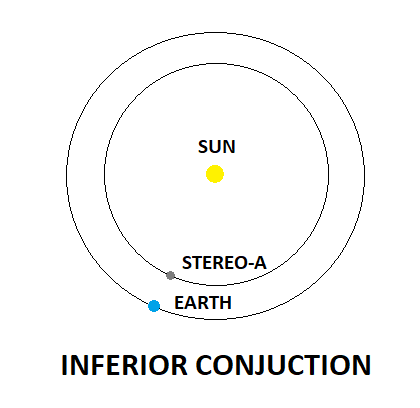
Using this GMAT script here one can model the arrival of STEREO-A at inferior conjunction and and get a sense of the distances still involved. At closest approach STEREO-A will be a little more than 0.055 astronomical units (AU) from Earth. As we will see this has a profound impact of the radio signal from STEREO-A for listeners here on Earth.
Animation of STEREO-A approaching inferior conjunction with Earth. This is a rotating frame from the Earth’s perspective.
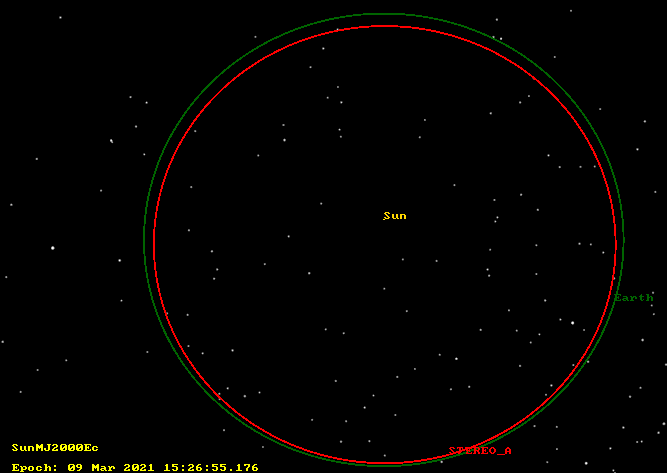
As one can note from the solar orbit of STEREO-A that it is quite similar to Earth’s orbit. But just a little faster so over a period of about 17 years STEREO-A will lap us and pass by for an inferior conjunction.
As noted above, this has a profound impact of the radio signal amplitude on Earth when STEREO-A is around inferior conjunction. The free space path loss (FSPL) of STEREO-A’s decreases with the square of the distance between Earth and the spacecraft. As can be seen on the plot below since STEREO-A was launched it has been on average very distant from Earth with a very large FSPL. But as inferior conjunction approaches the signal dramatically improves by about 30dB. The plots below show normalized signal strength levels relative to the peak signal level in the time period of the plot.
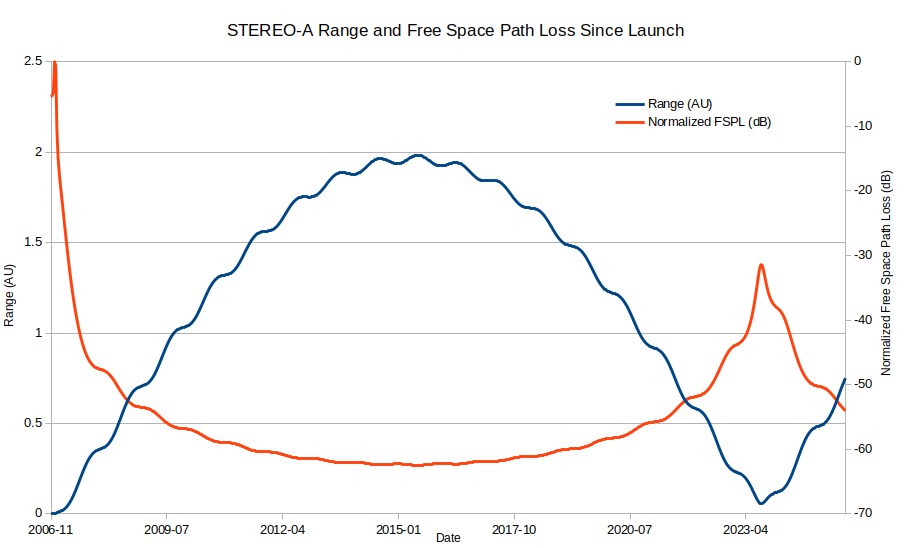
Zooming in on the inferior conjunction event one can see the dramatic effect on the signal levels at Earth from the rapidly approaching STEREO-A spacecraft.
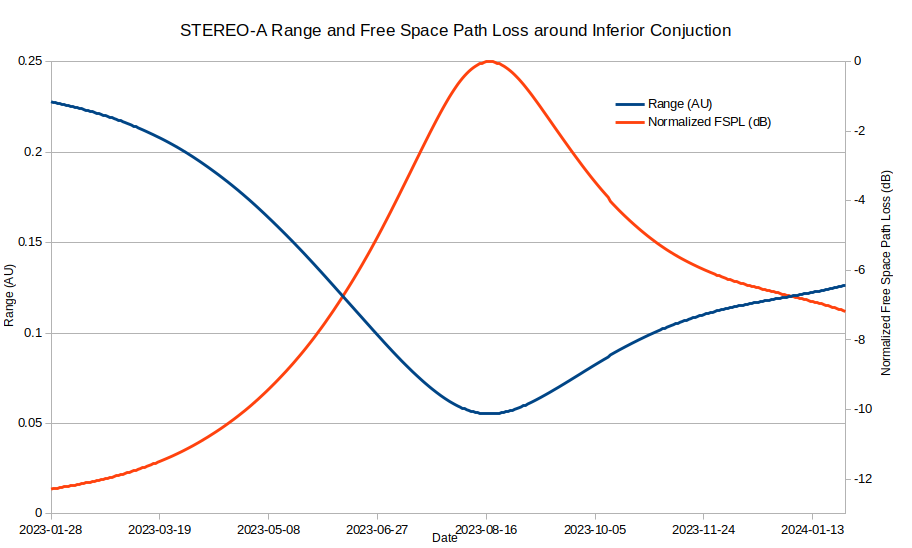
Since about mid June 2023 the amateur radio station here with it’s small 66cm aperture dish antenna has been noticing a dramatic increase in signal levels and the emergence of data side-bands on the signal.
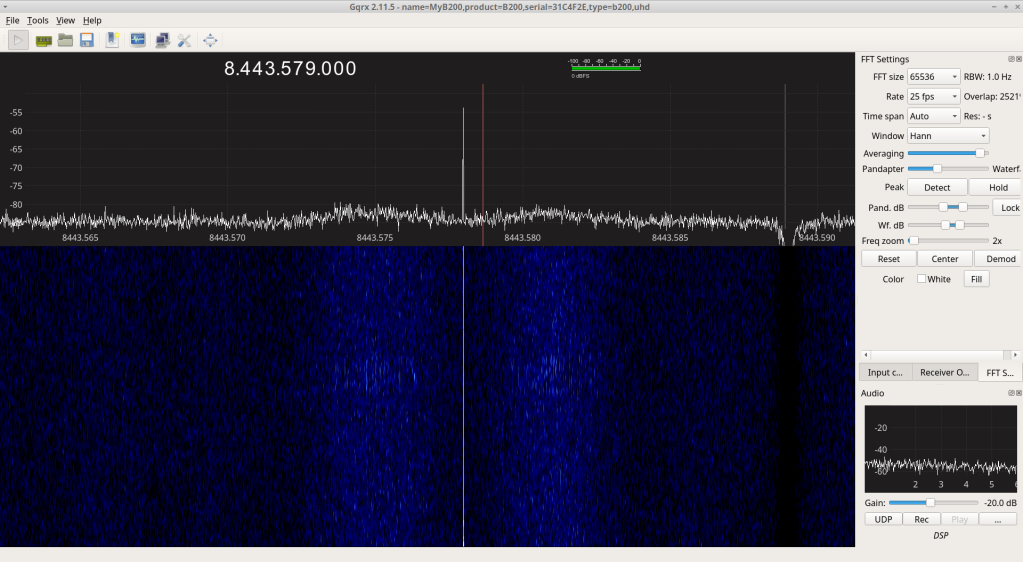
Once we’d figured out what was going on we found an obscure page on the STEREO Science Centre website that provides info on the conjunction and a tool to calculate STEREO-A’s position relative to the Earth, Moon and Earth-Sun L1 science missions.
Reception of STEREO-A Deep Space Beacon
You might be surprised to know that STEREO-A has a ‘deep space beacon’ that sends low rate data of the space environment and images of the Sun and surrounding area near constantly. It transmits +/- Doppler at 8443.58MHz.
The purpose of the beacon is to provide near real-time space weather forecasting ability. The real-time data from STEREO-A and other space weather monitoring missions at the Earth-Sun L1 point and in Earth orbit provide the world with a near constant flow of data on the space weather going on so we here on Earth can manage infrastructure that is sensitive to it such as power grids, satellite navigation and high frequency radio communication to name a few. This low rate data includes compressed images of some of the high resolution science data known as COR2, EUVI, HI1 and HI2 at an interval of few 10s of minutes depending on the payload. Other data it sends is numeric space weather data from the IMPACT, PLASTIC and S/WAVES payloads.
Presently there is a limited network of participating ground stations around the world that provide partial coverage to collect the real time forecast data from STEREO-A. The following stations are presently actively participating in STEREO-A space weather beacon reception and reporting the data to NASA for distribution.
- APL: Johns Hopkins University Applied Physics Laboratory, Laurel, MD, USA
- KSWC: Korean Space Weather Center, Jeju, South Korea
- BOCH: AMSAT-DL/Bochum Observatory, Germany
- KIEL: Amateur station DL0SHF, Kiel-Ronne, Germany
- KOGA: National Institute of Information and Communications Technology: Koganei, Japan
One of the most interesting is the amateur station DL0SHF, a 7.5m dish antenna located in Germany that is run by amateurs and provides a Earth Moon Earth (EME) beacon service and also gathers data from STEREO-A. It is the smallest of the beacon monitoring stations that formally participates in data gathering for NASA.
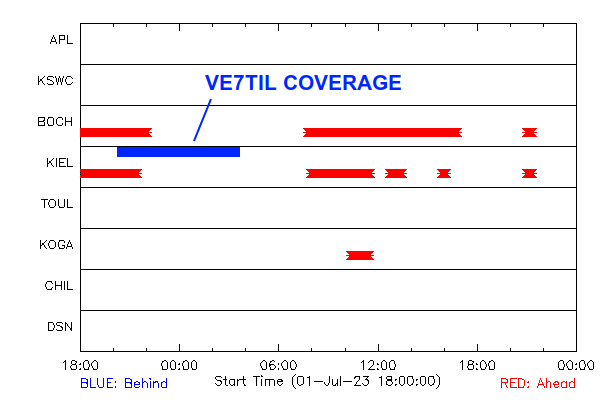
The X-band station at VE7TIL used at present is right on the edge of working for STEREO-A deep space beacon reception a little over a month from its arrival at inferior conjunction. The dish antenna is a 66cm prime focus type and is mounted on a modified telescope mount to automatically track STEREO-A and other objects in space.
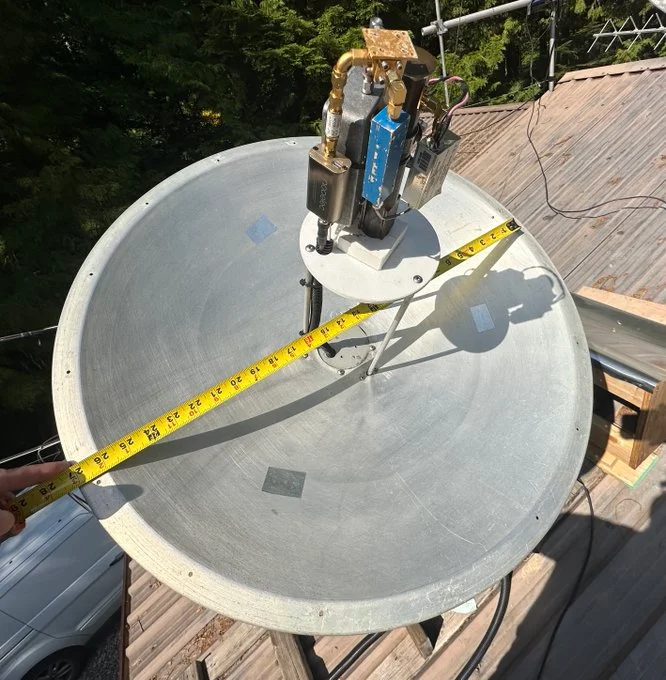
VE7TIL X-Band Dish Antenna Specifications:
66 cm at 50% illumination at 8.44 GHz is 32.3 dBi
136K is 21.3 dBK. Hence G/T = +11 dB/K The overall system block diagram is provided below. This system has proved successful in hearing signals at Mars and in the vicinity of Mercury from BepiColombo as well as providing some great Earth images from LEO weather and science missions such as AQUA, TERRA, NOAA 21 etc.
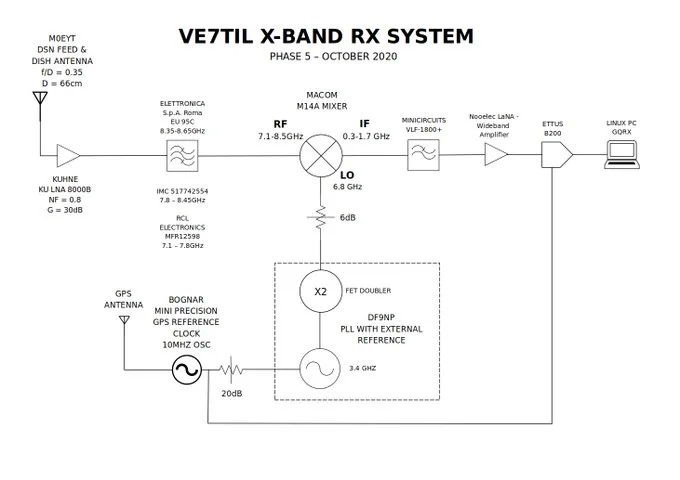
Obtaining and Making Sense of STEREO-A’s Data
Back in 2022, Daniel Estévez, EA4GPZ published a blog post on Decoding the STEREO-A Space Weather Beacon where he used data obtained from the 13m dish at the Harbin Institute of Technology in China by amateur Wei Mingchuan BG2BHC to develop a demodulator and decoded the data into constituent components. Daniel’s work provided significant insight into STEREO-A’s low rate beacon signal structure and provided a means of plotting the S/WAVES experimental data. However, a vast majority of the data copied remained unknown and not decoded into the specific products being sent just the constituent data blocks containing the various sensors output’s. So much work was still to be done.
Alan Antoine, F4LAU, @Aang23, also added a demodulator to the SatDump tool kit which greatly simplified the demodulation of the signal as GNU Radio was not needed.
VE7TIL now had a signal from STEREO-A and a means to demodulate it but after some initial attempts no frames were decoded. Digging into SatDump a bit further the pipeline for the demodulator was found and the various parameters were tuned until near 100% demodulation and decoding of the STEREO-A signal resulted. Due to the low SNR tuning the PLLs very tightly resulted in the most significant improvement in the performance of the system. The updated parameters used can be found here. As SNR improves these tight values don’t really improve performance much, but at low SNR they helped dramatically.
"pm_demod": {
"symbolrate": 3800,
"resample_after_pll": true,
"agc_rate": 0.0005,
"pll_bw": 0.0025,
"pll_max_offset": 3.14,
"rrc_alpha": 0.2,
"rrc_taps": 31,
"costas_bw": 0.0001,
"clock_omega_relative_limit": 0.005
}
},
"frames": {
"ccsds_turbo_r6_k8920_decoder": {
"turbo_iters": 20So how can an amateur station with such a small antenna have a hope of demodulation of spacecraft over 15 million kilometres away? The secret is the Turbo coding used by the spacecraft to encode it’s signal. As Daniel noted in his analysis STEREO-A uses the most robust method available from the standard.
The symbol rate is 3.8 kbaud. The FEC is CCSDS Turbo coding with r=1/6 and 8920 informations bits. From the different FECs described in the TM Synchronization and Channel Coding Blue Book, this is the one that gives the best Eb/N0 performance.
Daniel Estévez
In the image below one can see just how marginal the demodulation and decoding of the STEREO-A signal is and also appreciate the incredible performance of the Turbo code used to make this possible as it approached the Shannon limit.
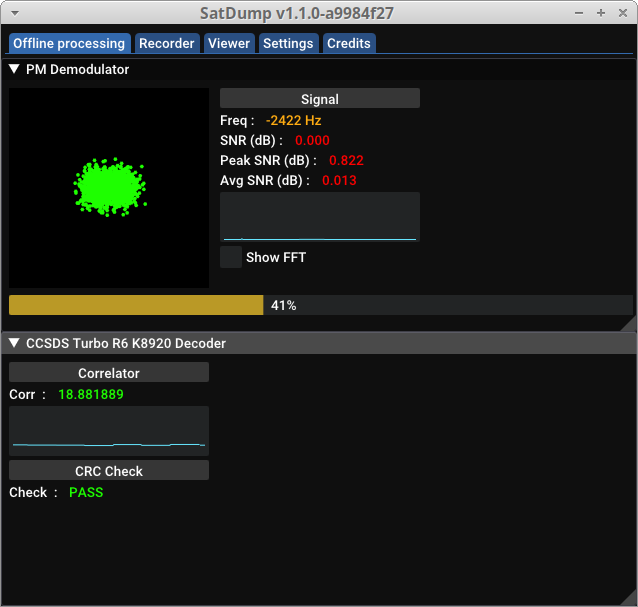
As noted above the data is sent at a very low rate, so to gather a MB of data takes hours. But after patient waiting one is rewarded with a data file full of STEREO-A data and many compressed images.
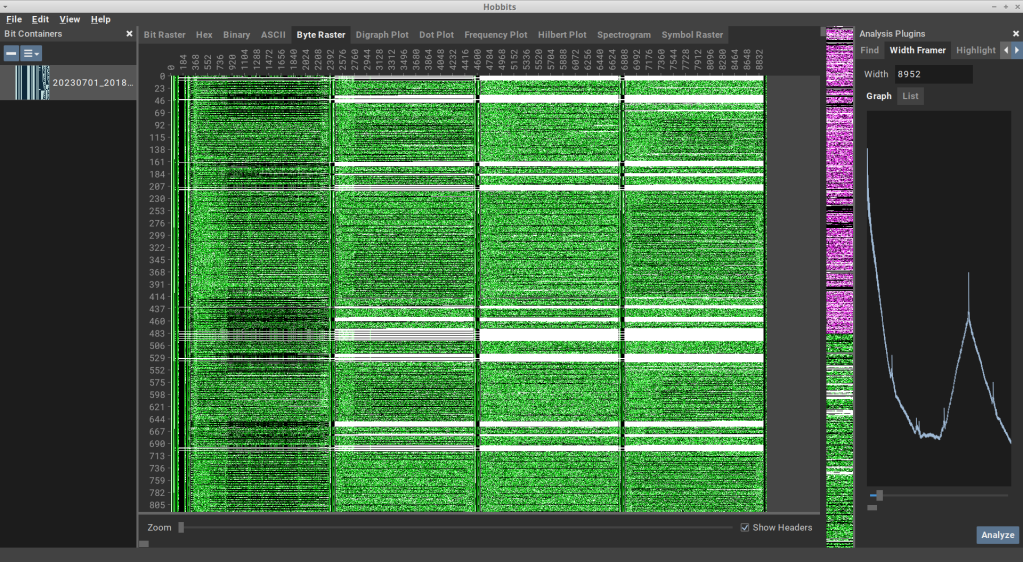
Daniel had largely made sense of the major structures in the data and gave clues as to where to look to build on finding and extracting image and further numeric science and telemetry data from the data.
This is where Alan did some detective work on the STEREO Science Centre website and found some tidbits of information and code that made the process of finding the images and then decompressing them to allow us to view the raw images being sent from STEREO-A via its low rate deep space beacon.
Alan found the document that describes the STEREO/SECCHI Level-0 to Level-0.5 FITS Pipeline CMAD on the STEREO website and two C files, rdSc.c and hdr.c in a directory on the STEREO site /instruments/software/secchi/utils/rdSh. These documents provide considerable insight into how the data from the spacecraft is processed on the ground to be used for generating images. The proceeding document provided details on some formats that were used to figure out the packet format and know how to extract the header, data, and trailer block and allowed Alan with a bit of reverse engineering to gather together the first image files by extracting the header, data, and trailer blocks from the raw data files.
The next step unique to this mission was to decompress the highly compressed deep space beacon images. Alan found a Linux binary on the STEREO site that did the job. Called ‘idecomp.linux’ it decompressed the data so an image could be extracted and viewed. Unfortunately, the source code hasn’t been found yet as NASA doesn’t have a copy, we asked! We’re exploring other avenues to obtain the source code for integration into SatDump to make the extraction of images from STEREO-A not platform dependant.
You need to download the idecomp.linux file and change the Stereo.json file in the SatDump pipelines folder to direct your version of SatDump to the local path of the executable. Ensure you have the latest build of SatDump before setting this up.
"products": {
"stereo_instruments": {
"icer_path": "./icer_decomp_linux"Alan’s SatDump code found in the GITHUB SatDump repository tells all the gory details of how the images are extracted and decompressed for those seeking those details.
A summary of the process of extracting STEREO-A data and images is as follows:
- Demodulate: Convert the modulated signal back to its original form.
- Correlator: Use correlation techniques to detect and synchronize the received signal.
- De-randomize: The bit stream is de-randomized. It is randomized to ensure synchronization is possible and a clean modulation
- Turbo Decoder: Employ turbo decoding techniques to recover the original data.
- VCID Selection: Choose the appropriate Virtual Channel ID (VCID) to process.
- Extract CCSDS Packets: Extract CCSDS Packets from the data stream and filter by APID.
- Recompose File Blocks: Reassemble the packets into their respective file blocks.
- Dump Payload Part: Isolate the payload part of each file block.
- Decompress: If the payload is compressed, decompress it to obtain the original data.
- Image: Process the decompressed data as an image.
Further a review of the actual FITS images found in the beacon data files provided a further clue as to how to identify the APID, telescope and unique image information. The raw binary data from the spacecraft also includes ASCII filenames found to correlate with the source filenames located in the FITS headers of the images found on NASA’s STEREO website. Alan’s work revealed that the SECCHI images raw off the spacecraft were not the images seen on the SECCHI beacon summary site and this caused us some initial confusion about what the actual APIDs were for each type of image until we unlocked the riddle of the ASCII filenames.
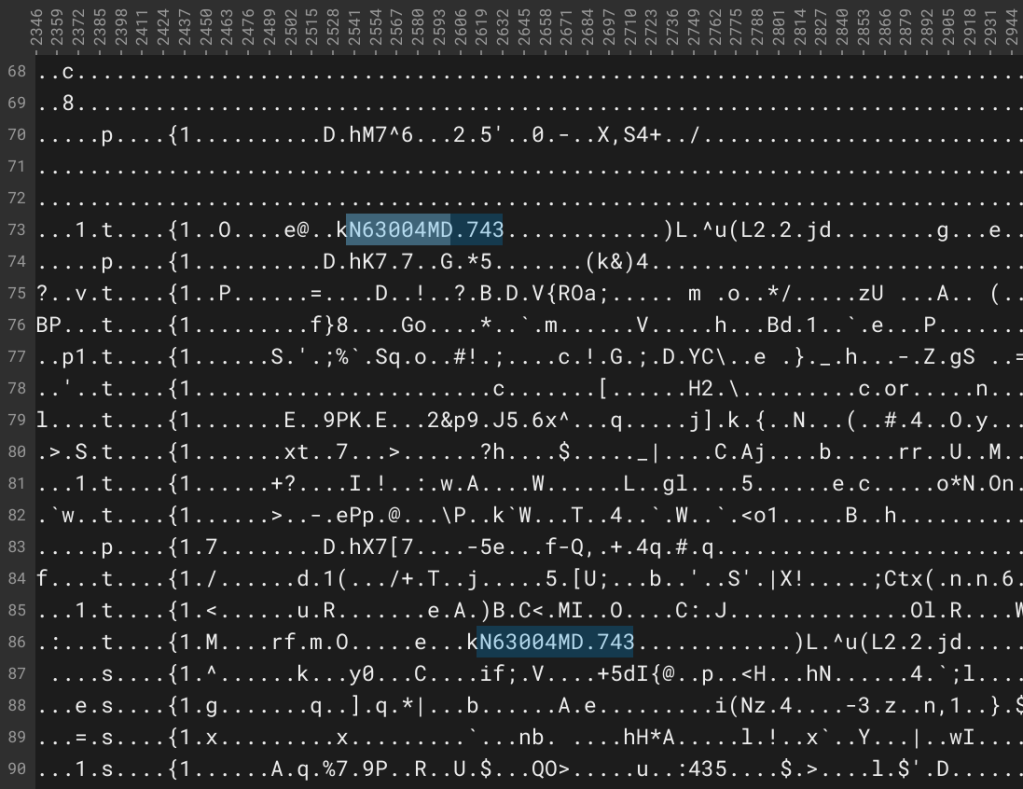

Further research on the STEREO website lead to finding the filename convention for images sent by STEREO-A and B in a document called SECCHI FITS Header Keyword Definition, page 12. So the filename is a very powerful tool to identify all this info in a compact way. Based on our experience thus far this is the only ASCII data sent by STEREO-A.
EXAMPLE:
Filename format is YMMDDaaaa.APT
Where,
Y = Year
MM = Month
DD = Day
aaaa = image counter and sequence number
AP = APID
T = Telescope used
Decoding filename N63004MD.743
Given,
N = 'N' in base 36 is equal to 23 in decimal, thus the year from 2000
6 = is the month of June, note this is also in base 36
30 = is the day of the month
04FM = is the image counter & sequence number in base 36
. = extension point
74 = APID 1140, given that the APID in hex minus 0x400, i.e. 0x474 - 0x400 = 0x74
Where, APID 1137 (0x471), 1138 (0x472), 1139 (0x473) and 1140 (0x474)
3 = The telescope is EUVI
Where, 1=COR2, 2=COR1, 3=EUVI, 4=HI2 and 5=HI1, for STEREO-B add 5.Further research turned up some processing code on the NASA STEREO site that revealed other image filename extensions and their relationships to the naming conventions used in the data repository on the NASA site called getscifileinfo.pro.
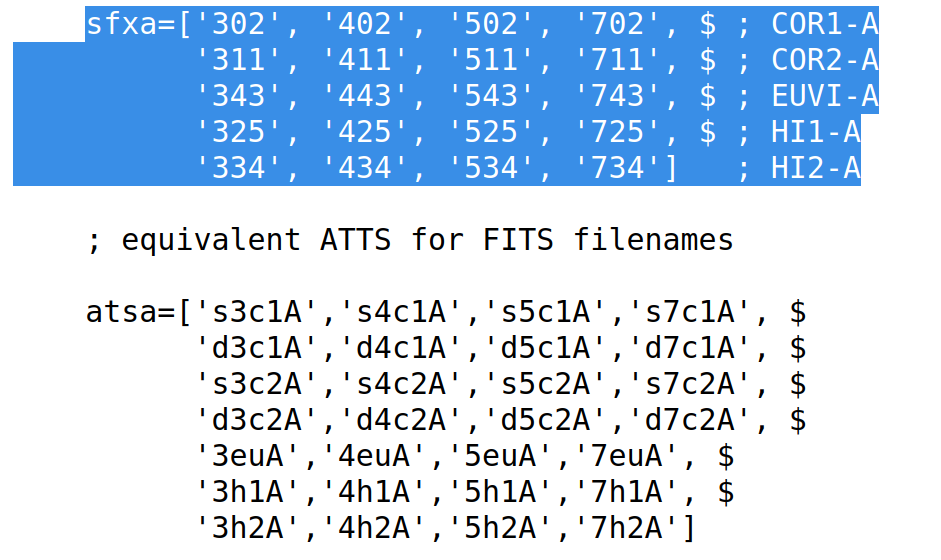
With the knowledge extracted from the spacecraft data, and the NASA STEREO website a complete understanding of the presently observed APIDs was obtained and this was cross referenced with data received from STEREO-A and that recorded on the NASA website as a double check. The table below provides a convenient summary.
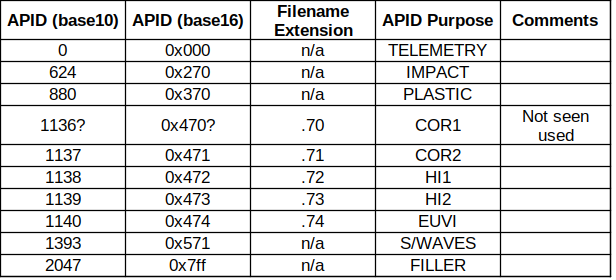
Behaviour of the STEREO-A Beacon
STEREO-A has largely two modes of normal operation. High rate data while in lock with a ground station and low rate data when not in lock and sending deep space beacon data including the compressed images used for space weather forecasting.
Understanding the beacon’s behaviour and knowing how to plan observing sessions to gather the deep space beacon data is important. The following spectra show the unlocking/locking behaviour when STEREO-A ends and starts DSN communications. You can plan your observing sessions around the DSN sessions by referring to the STEREO DSN Schedule Summary posted on the STEREO-A website.
DSN Now doesn’t show all the activity as other ground stations from ESA and NASA ones not on the live website are used and we’ve noted a few times where the STEREO-A schedule shows activity which we can see happening on the air but the DSN NOW site shows no activity for the respective deep space station antenna. So the STEREO-A website schedule appears the golden source of scheduling info.
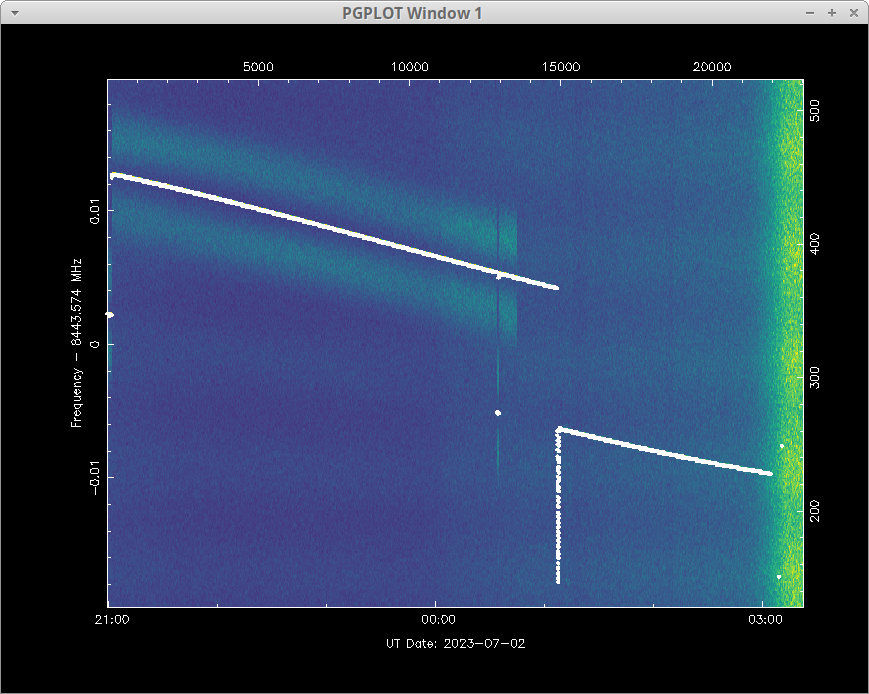
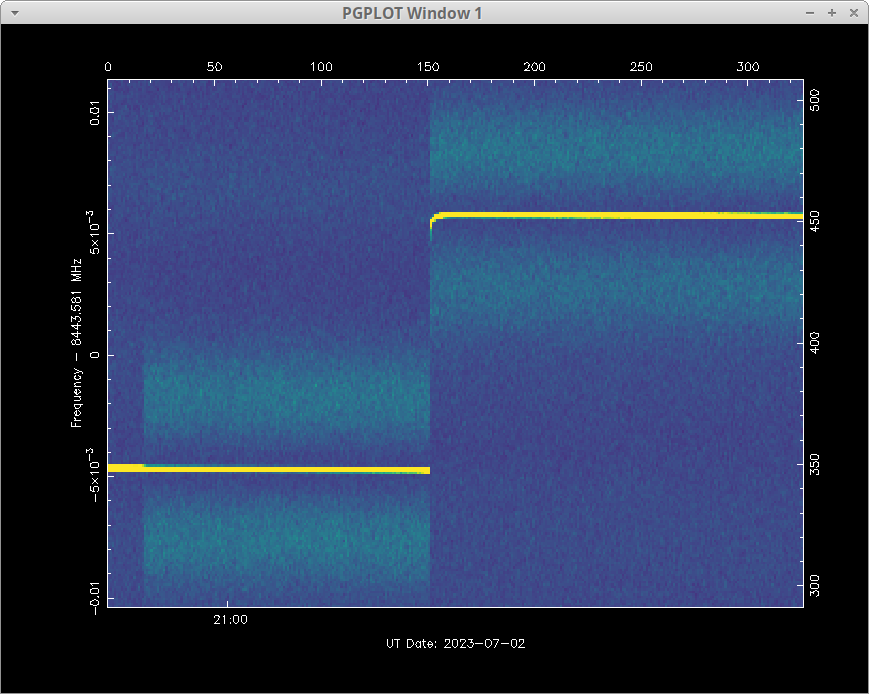
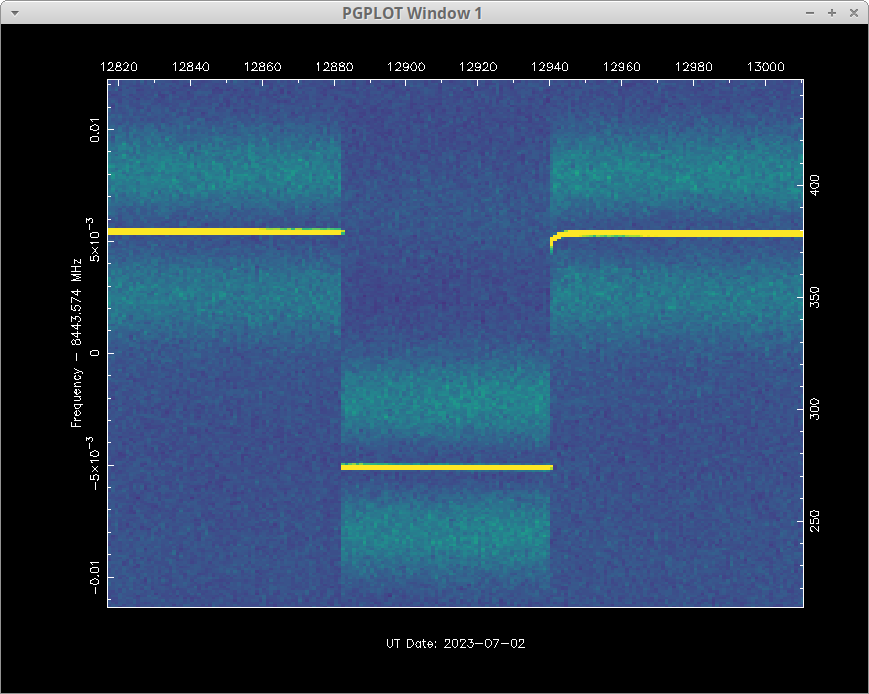
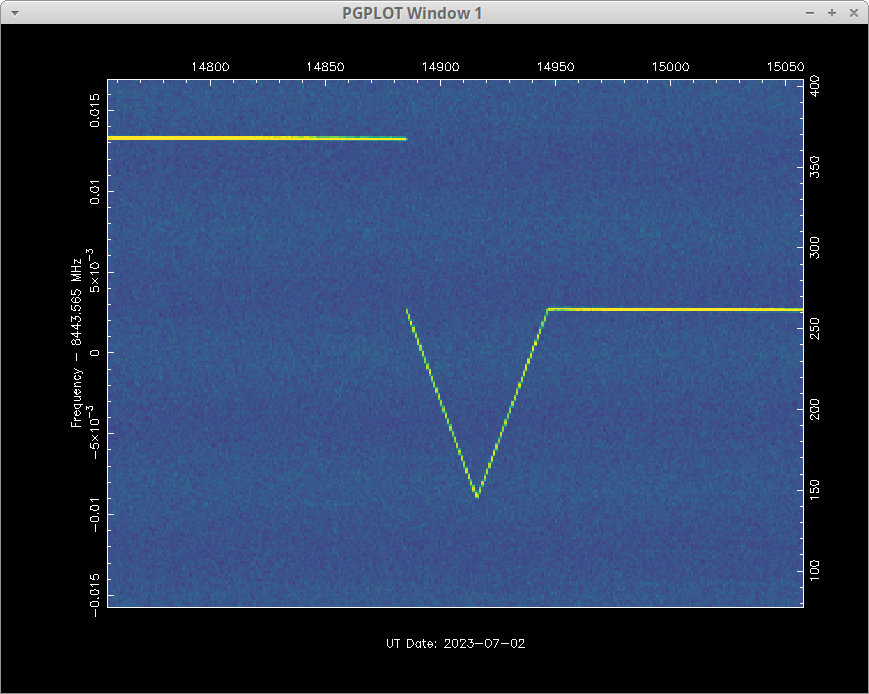
The data download speed is very low and to gather images long data gathering runs are needed. To gather enough for animations entire passes should be recorded.
Doppler rates will be dramatically changing as STEREO-A approaches and passes inferior conjunction. The plots below will provide an overview since launch and a zoomed in analysis of the Doppler resulting around the inferior conjunction.
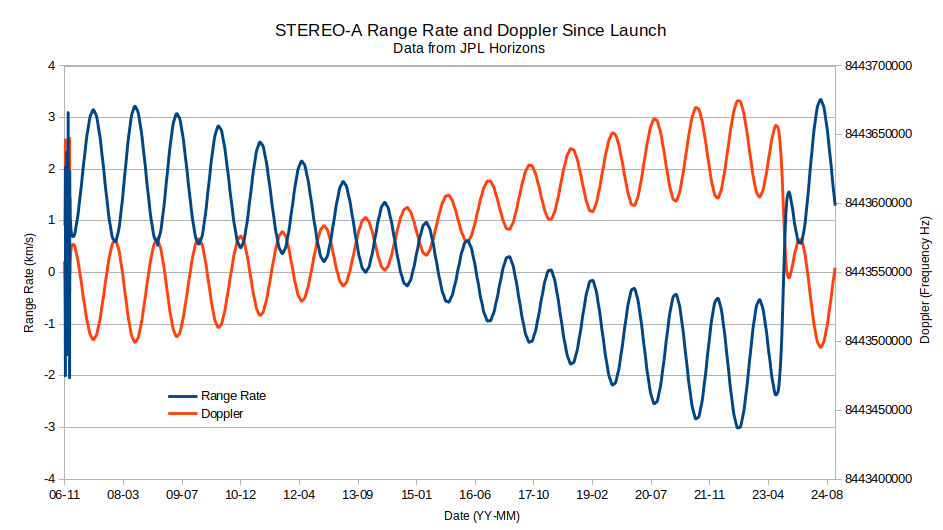
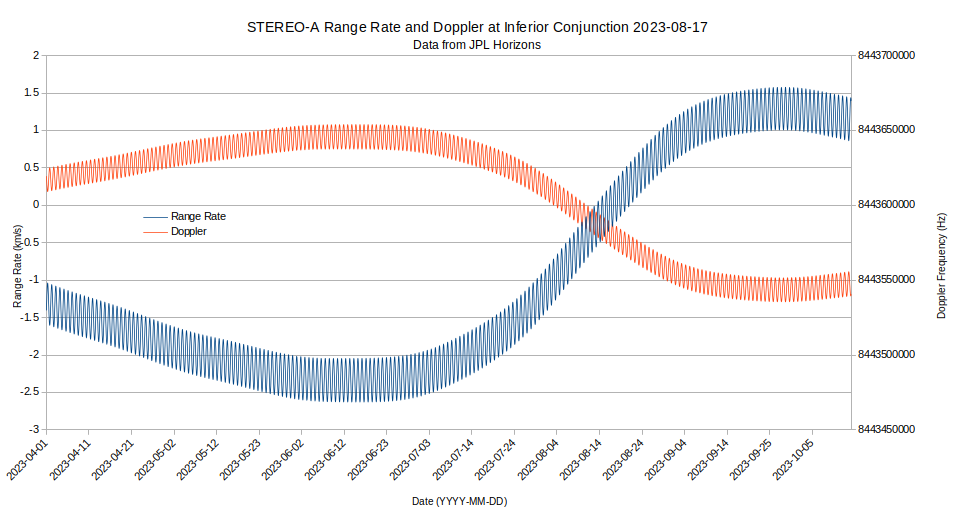
The best strategy for demodulation/decoding the data is to setup and make a long recording of STEREO-A’s low rate data when the spacecraft is not in a high rate data session with a ground station. Record lots of data (more than an hour) and then run the SatDump decoder and allow the signal to lock and write the .cadu file and then process the images. The lower the SNR you have the longer the decoder needs to lock onto the signal and start producing data. Since STEREO-A sends it’s data at such a low rate you need to record for long periods of time to get many images.
The Glorious Images!
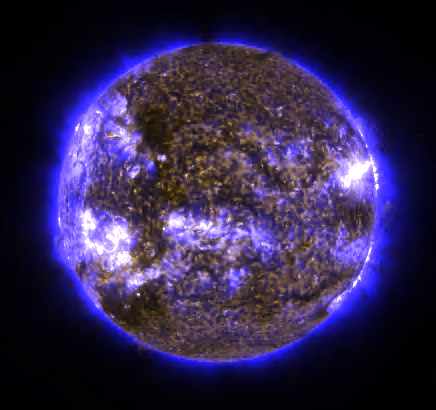
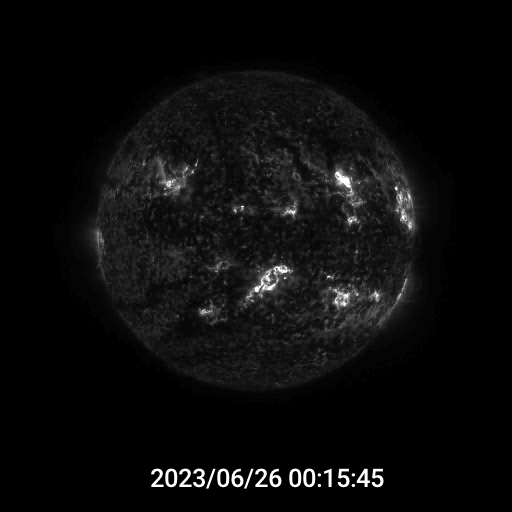


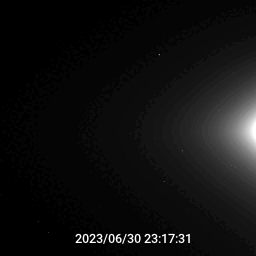
A complete repository of all the images used to make these animations and the raw data recovered by STEREO-A during this process can be found here.
Inferior Conjunction Citizen Science Opportunity
STEREO-A will be quite close to Earth for some months to come and some amateurs with larger dish antennas have been able to decode STEREO-A for about a year now. This proximity provides a unique opportunity for amateur observation of the STEREO-A signal and the recovery of data from the low rate beacon that may fill some data gaps in the present system. Being that it’s near solar maximum gathering of the this data in near real-time with limited gaps may be of value to space weather forecasters as amateurs can fill in gaps in the existing low rate beacon receiving network.
There are plans to allow for the real time data from a running SatDump STEREO-A receiving system to be posted to the Internet and allow NASA or any other interested party access to the raw data so it can be processed and used as they see fit. This would allow the growing community of deep space network radio observers to contribute to science and the forecasting of space weather events during a time of higher than usual solar activity and allow all involved to learn more about the Sun and the resulting space weather it creates.
This is a unique way the world can celebrate the first inferior conjunction of the 17 year old STEREO-A mission!
Welcome home STEREO-A may you have another inferior conjunction in you.
Acknowledgements
Alan Antoine, F4LAU – The driving force behind the open source SatDump software package for the decoding of satellite imagery. He provided the decoder and the expertise to extract the images from the STEREO-A data stream while teaching this old dog some new tricks!
Daniel Estévez, EA4GPZ – Rigorously documents each deep space mission to learn about it signal’s characteristics and reports many educational details on his highly useful blog to the amateur radio community. Daniel’s work laid the groundwork for us to carry on the study of STEREO-A’s signal.
USA SATCOM – Joe provided data from his impressive 2.3m X-band system and filled in gaps at times to help improve the rigour of our data analysis. USA SATCOM offers a range of highly reliable software in Windows for tracking, decoding and presenting space based imagery.
Paul Marsh (UHF SATCOM) and Jean-Luc Milette for reporting the ever increasing STEREO-A signal and prompting me to wonder what was going on.
Dr. Cees Bassa – It goes without saying that Cees’ work on STRF (SatTools RF) makes for easy and accurate work on any form of Doppler analysis project. See his GITHUB site for code and details. Thank-you Cees!
NASA STEREO Science Centre – A shinning example of open space science to be modelled by other missions and agencies. Many thanks to the team for timely responses to questions and their proactive open behaviour in sharing mission data and operational details.

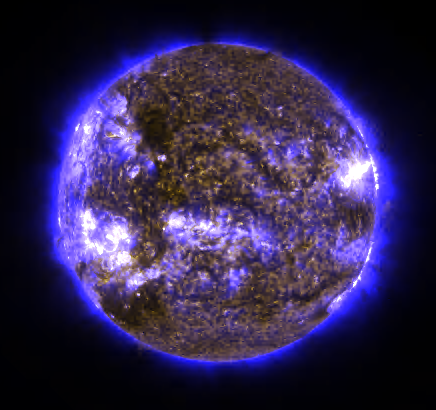
Has anyone tried to find Stereo Behind? With all the action of finding zombie sats & what-not, it seems like a no-brainer!
LikeLike
What do you think 😉
LikeLike